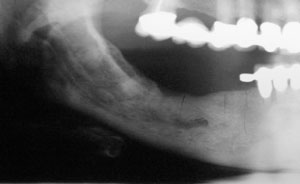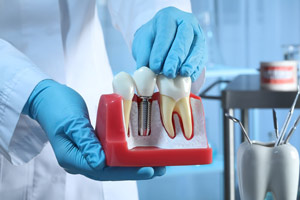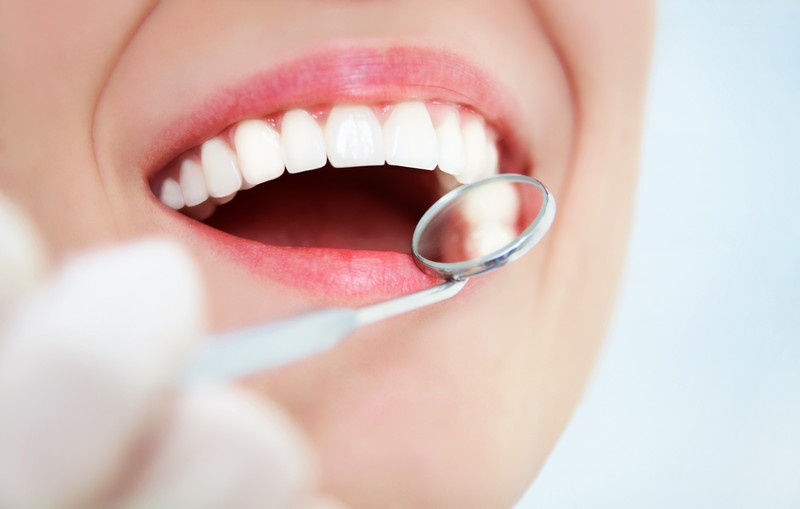Biphosphonate related osteonecrosis of the jaw, (BRON), is a pathological condition that is defined as oral bone exposure for a period greater than 8 weeks, in a patient that has been on biphosphonate medication without a history of exposure to external beam radiation. Most affected patients present the condition after invasive procedures that involve dentoalveolar bone manipulation, although spontaneous exposure of bone has also been observed.
The etiologic mechanism has been related to alter bone remodeling at the cellular osteoclastic physiologic action.
More than 90 % of the reported cases to date have occurred with intravenous biphosphonate therapy for which the prevalence has been estimated in the range of 1% to 5% depending on the treatment duration. Early case series also identified approximately 5% of reported cases occurring in patients receiving oral nitrogen containing bisphophonate drugs, one of the primary therapies for the prevention of osteoporotic fractures.
For patients taking oral biphosphonates, the two factors that significantly increase the risk of developing osteonecrosis of the jaws are, the duration of continuous oral biphosphonate therapy: treatment of 3 years or more is associated with progressively increased risk, and concomitant use of steroids, particularly prednisone.
Periodontal disease and dental abscesses are the pathologies that most often have been found to trigger BRON because their inflammatory cytokines establish the need for bone renewal. Other invasive dental procedures include tooth removals, dental implant placements, periodontal surgery, apicoectomies and bone grafting procedures, all of which increase the demand of bone turnover/renewal as a result of direct bone trauma. In addition the presence of mandibular tori, particularly if they are multilobulated, represent an anatomic risk factor owing to the high rate of natural bone turnover for tori and their thin underlying mucosa.
A means of assessing risk to develop BRON is a thorough clinical and radiographic examination.
A good quality panoramic radiograph and periapical films, where indicated should be taken.
Particular attention should be given to the molar region, which may exhibit early signs of biphosphonate toxicity to the bone, including generalized sclerosis in the alveolar bone and the lamina dura and/or widening of the periodontal ligament space.

Generalized sclerosis, increase in bone mineral density.
May be indicative of bisphosphonate toxicity.

BRON, in a 66 year old patient with osteoporosis on P.O. fosamax,
s/p placement of dental implants.

Oro-astral fistula in a patient with surgically related BRON.
Morning fasting C-terminal telopeptide (CTX), has been suggested as a bone turnover marker as an indirect reflection of osteoclastic activity to help asses risk, and guide the clinician’s evaluation of nonsurgical treatment response as well as to guide decisions as when surgery can be accomplished with the least risk.
CTX prediction value for BRON.
0-100 pg/ml high risk
100-150 pg/ml moderate risk
↑ 150pg/ml minimal risk
The clinician is left to interpret how to use CTX values in given clinical situations.
Although BRON appear to be a potential complication with bisphosphonates , it should not preclude its use when clinically indicated.
There is no justification for these patients to avoid non surgical dental care, on the contrary it is probably more important for patients on bisphophonates to receive routine dental care.




